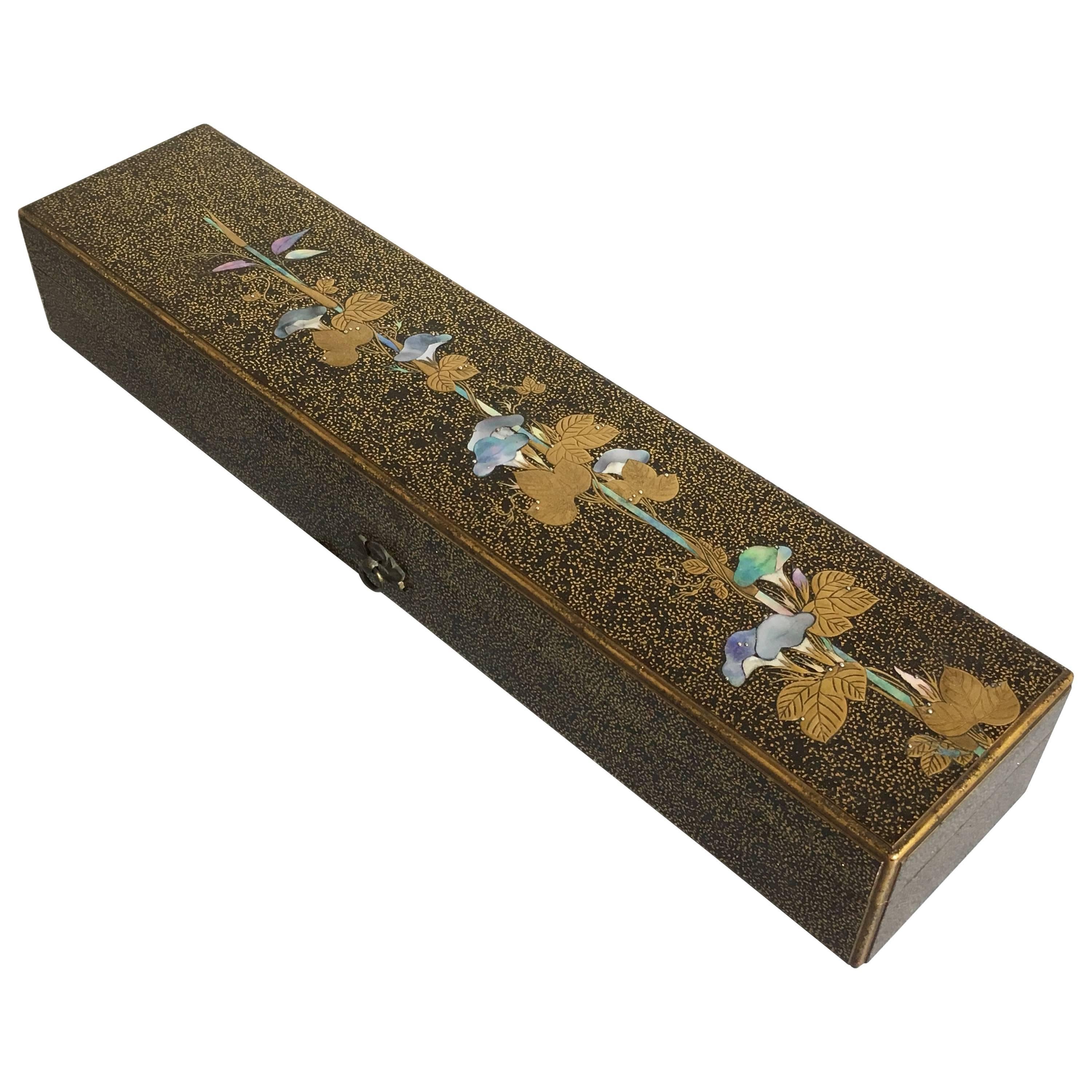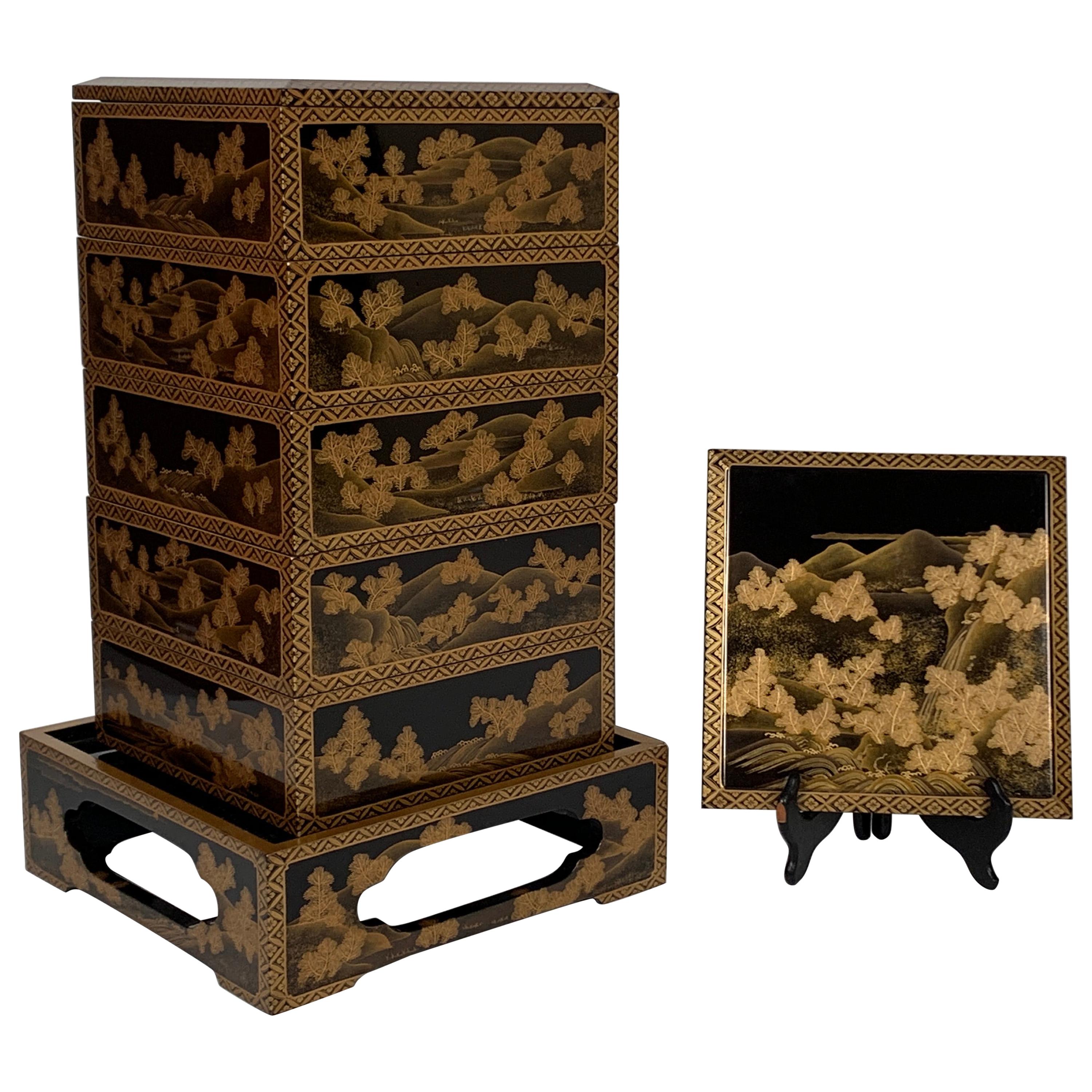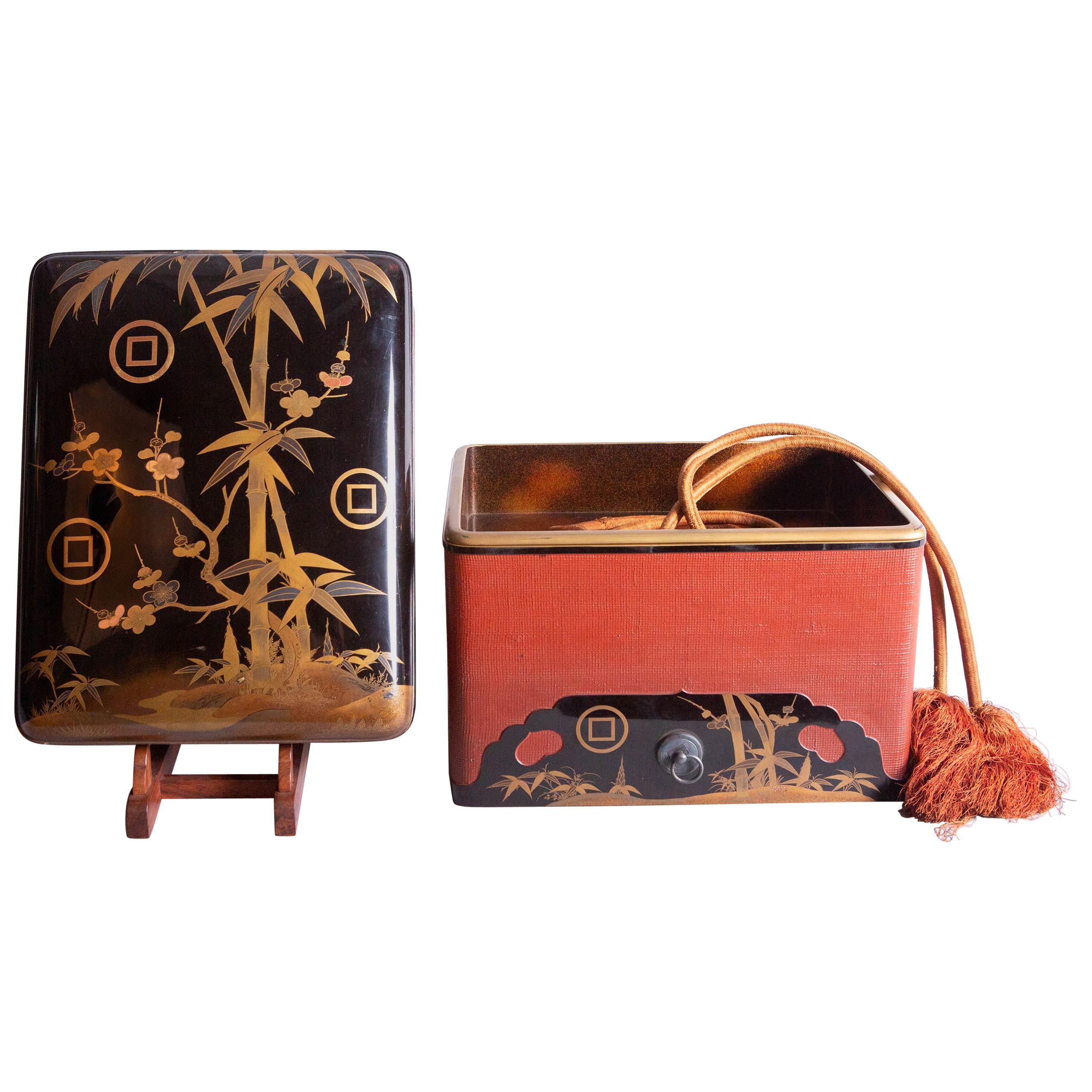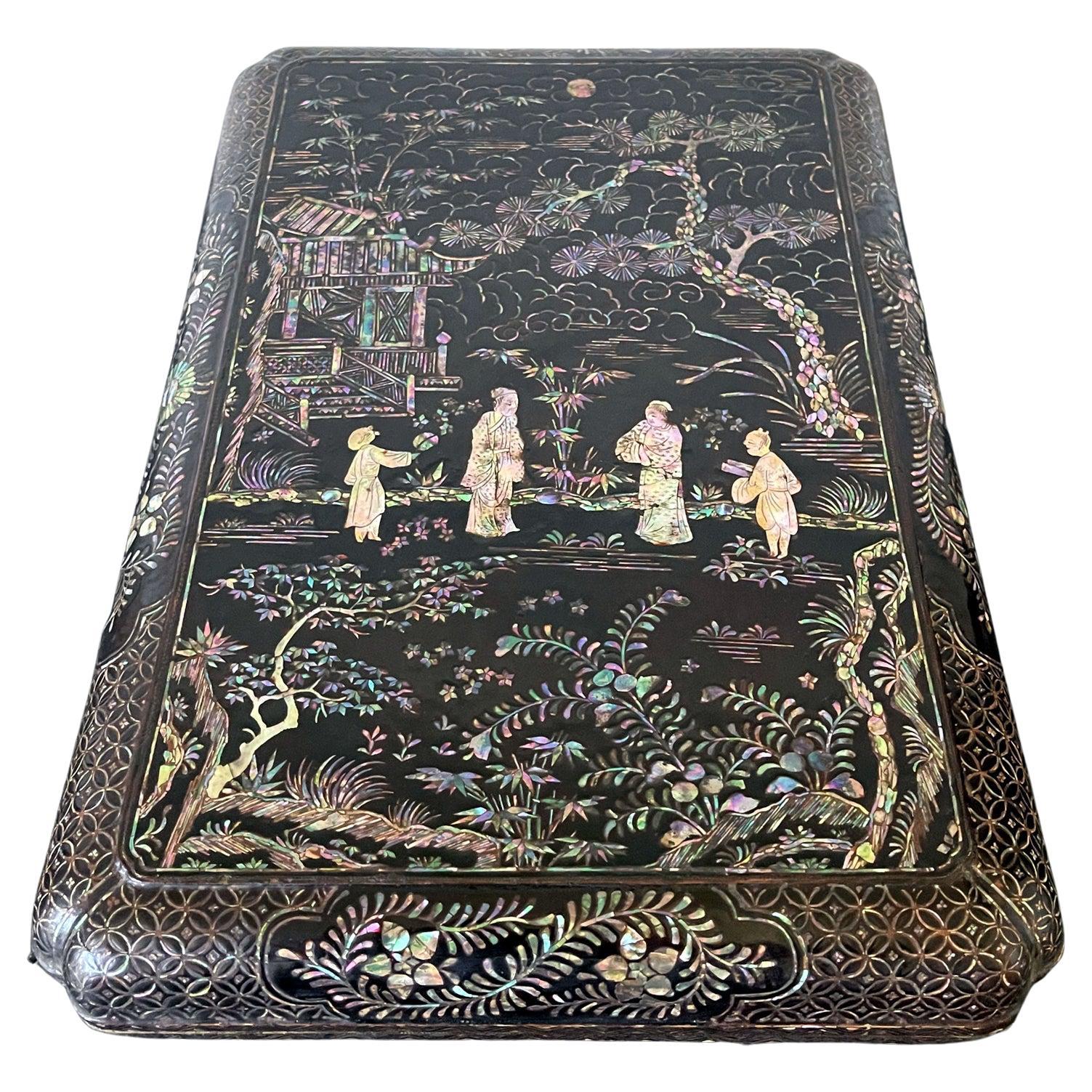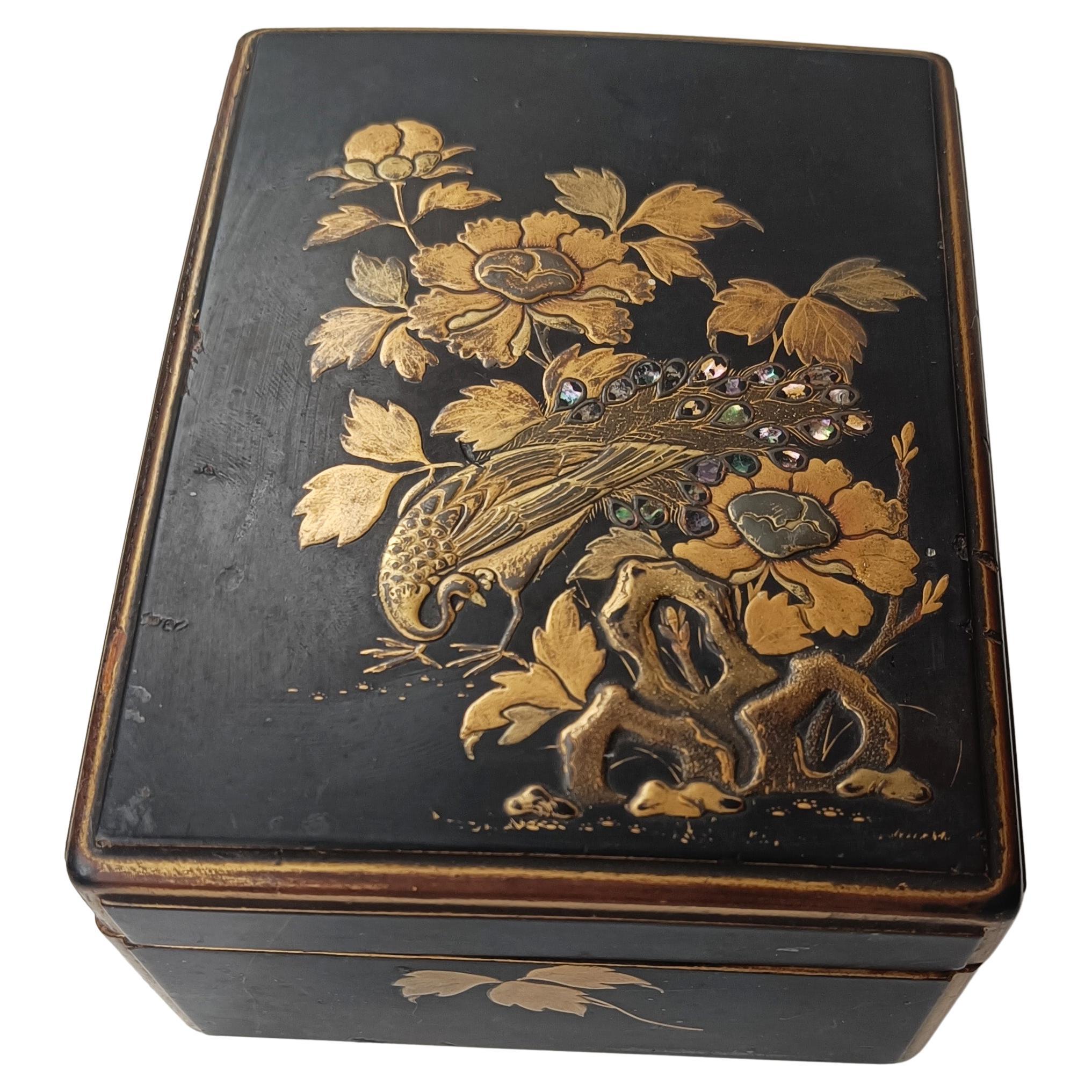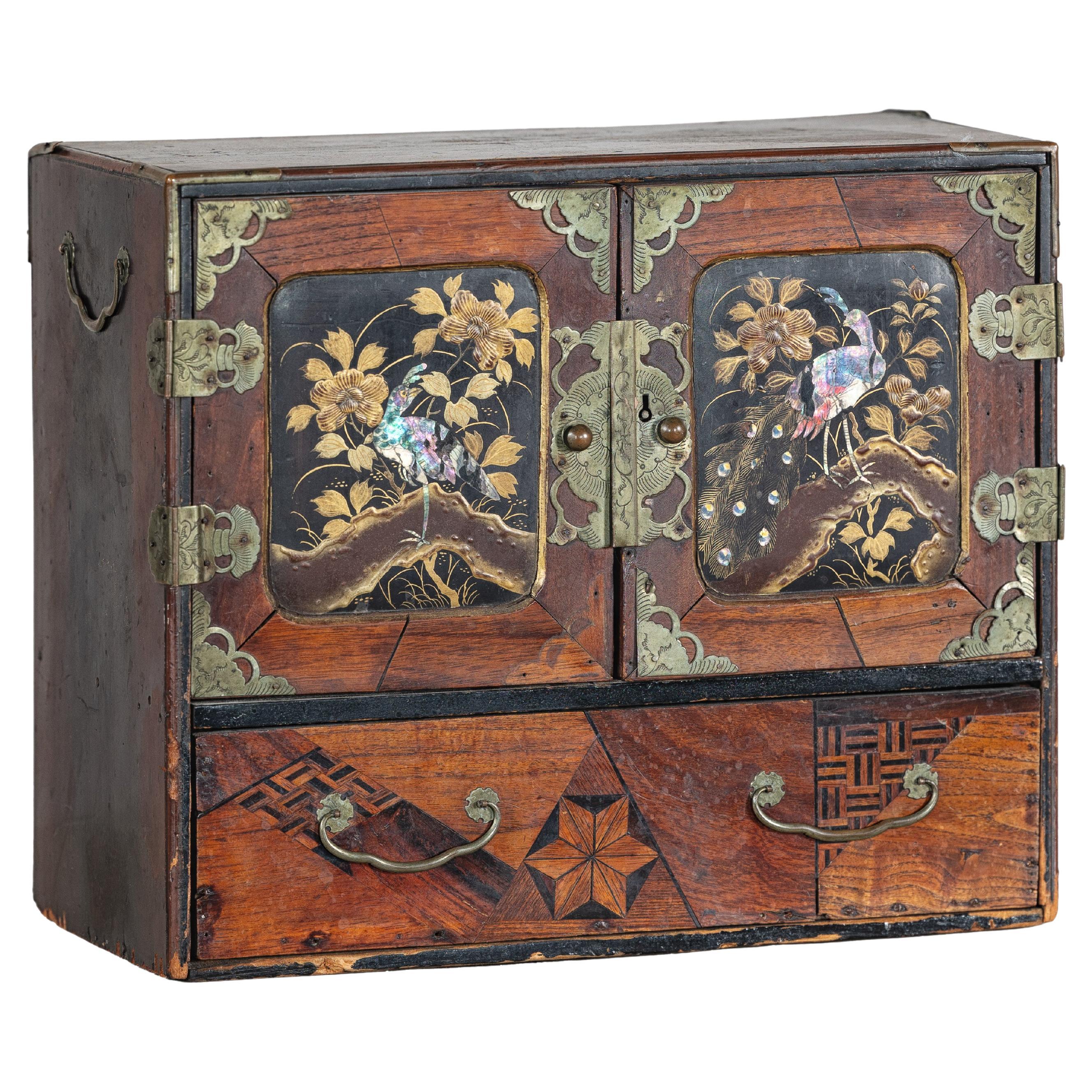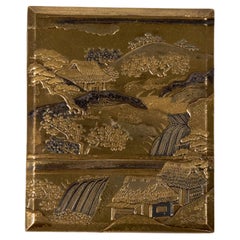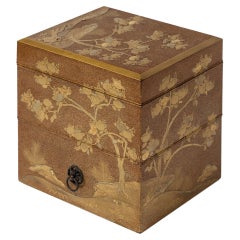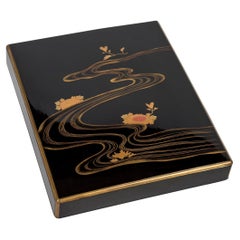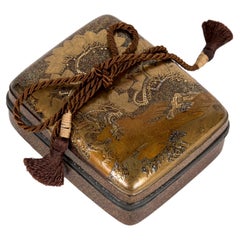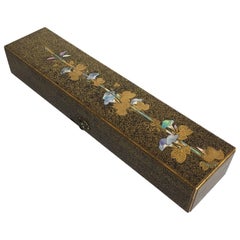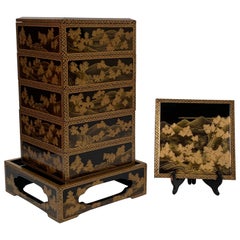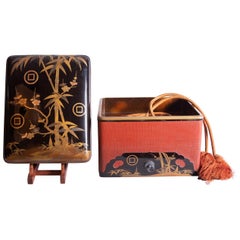Items Similar to Japanese fudebako or brush box in lacquered hardwood and ceramic inlay
Want more images or videos?
Request additional images or videos from the seller
1 of 8
Japanese fudebako or brush box in lacquered hardwood and ceramic inlay
$3,353.67
£2,485.25
€2,800
CA$4,578.40
A$5,093.28
CHF 2,669.96
MX$62,238.65
NOK 33,998.63
SEK 32,005.01
DKK 21,318.95
Shipping
Retrieving quote...The 1stDibs Promise:
Authenticity Guarantee,
Money-Back Guarantee,
24-Hour Cancellation
About the Item
Brush box (fudebako) is made of wood and lacquer. On the lid, lacquer decoration representing sagittarius, a flower inlaid with ceramic and a leaf inlaid (raden).
Interior and base of the box in nashi-ji lacquer.
Japan - Taisho Era (1912-1926)
Height: 1.4 in / 3.5 cm - width: 2.8 in / 7.2 cm - depth: 9.4 in / 23.9 cm
- Dimensions:Height: 1.38 in (3.5 cm)Width: 2.84 in (7.2 cm)Depth: 9.41 in (23.9 cm)
- Style:Taisho (Of the Period)
- Materials and Techniques:
- Place of Origin:
- Period:
- Date of Manufacture:1912-1926
- Condition:Wear consistent with age and use.
- Seller Location:PARIS, FR
- Reference Number:Seller: 2022-10321stDibs: LU8311242789042
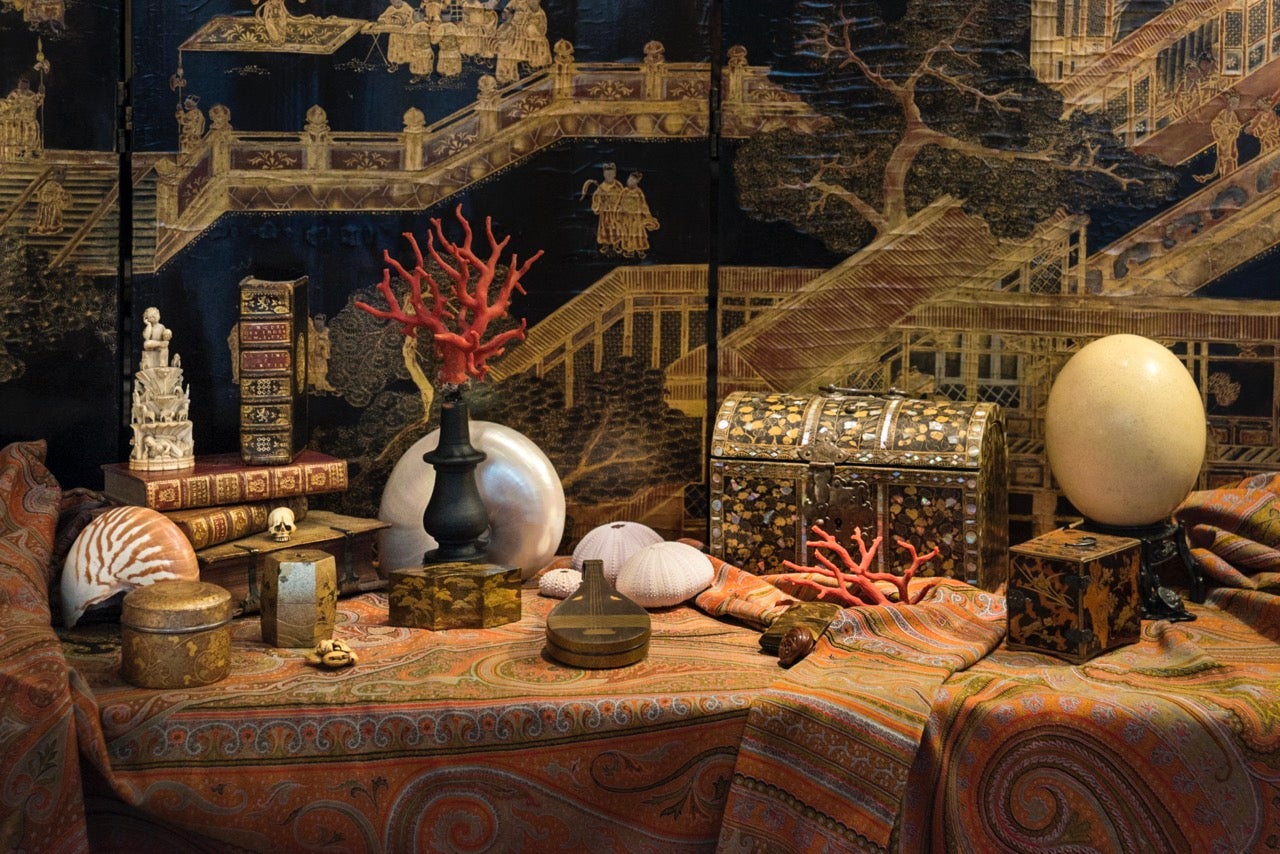
About the Seller
No Reviews Yet
Vetted Professional Seller
Every seller passes strict standards for authenticity and reliability
Established in 2013
1stDibs seller since 2023
Typical response time: Several days
- ShippingRetrieving quote...Shipping from: PARIS, France
- Return Policy
Authenticity Guarantee
In the unlikely event there’s an issue with an item’s authenticity, contact us within 1 year for a full refund. DetailsMoney-Back Guarantee
If your item is not as described, is damaged in transit, or does not arrive, contact us within 7 days for a full refund. Details24-Hour Cancellation
You have a 24-hour grace period in which to reconsider your purchase, with no questions asked.Vetted Professional Sellers
Our world-class sellers must adhere to strict standards for service and quality, maintaining the integrity of our listings.Price-Match Guarantee
If you find that a seller listed the same item for a lower price elsewhere, we’ll match it.Trusted Global Delivery
Our best-in-class carrier network provides specialized shipping options worldwide, including custom delivery.More From This Seller
View AllJapan lake landscape kobako box lacquer - Edo
Located in PARIS, FR
Rectangular kobako box in takamaki-e and kirigane gold lacquer circled with pewter depicting a lake landscape. Inside and back of the box in nashi-ji lacquer.
Japan – Edo period (16...
Category
Antique 18th Century Japanese Lacquer
Materials
Gold
Japanese Lacquered Tebako 'Box'
Located in PARIS, FR
Tebako box with three compartments in golden and nashi-ji lacquer, decorated with golden, red, and kirigane lacquer, golden persimmon tree leaves, among rocks. The compartments are of increasing size from the top. The decoration is in continuity.
Persimmon has been cultivated in southern China for more than 2500 years and is believed to have been introduced to Japan in the 8th century. The veneer is a tree with very hard wood, similar to ebony. According to a legend, one specimen survived the atomic bombing of Nagasaki on August 9, 1945, close to the epicenter. It is therefore in Japan a symbol of strength and longevity. It is also the national fruit of the country. It is eaten as a traditional dish during New Year's Day celebrations.
Tebako literally means "portable box...
Category
Antique 1860s Japanese Lacquer
Materials
Lacquer
Japanese suzuribako lacquered box peony river
Located in PARIS, FR
Suzuribako box (empty) in black lacquer. Gold maki-e decoration of a river bordered by peonies, one with red highlights. The edges of the lid are in gold lacquer. Nashi-ji interior.
Category
Antique Late 19th Century Japanese Lacquer
Materials
Gold
Japanese landscape pine kobako box Edo period 18th century
Located in PARIS, FR
Rectangular black and gold lacquer kobako box decorated with pine trees in a mountain landscape in takamaki-e, kirigane and hiramaki-e lacquer. Background in nashi-ji lacquer. Surmou...
Category
Antique 18th Century Japanese Lacquer
Materials
Gold
Japanese peony basket lacquered box Edo
Located in PARIS, FR
Eight-sided, flared shaped lacquer kobako box, following the decoration on the lid depicting a basket of flowers, composed of peonies and chrysanthemums in gold takamaki-e and hirama...
Category
Antique 18th Century Japanese Edo Lacquer
Materials
Gold
Japanese Natsume or tea box adorned with mapple leaves and sakure flowers
Located in PARIS, FR
Natsume in dark red lacquer, decorated with autumn leaves and cherry blossoms in hiramaki-e and nashiji. Interior in black lacquer.
Maple leaves (Momiji) are celebrated in literature...
Category
Early 20th Century Japanese Taisho Lacquer
Materials
Gold
You May Also Like
Japanese Edo Period Igarashi School Long Lacquer Box, Tanzaku-Bako
Located in Austin, TX
A stunning Japanese Edo period lacquer tanzakubako, box for poem cards, late 18th-early 19th century, Edo Period, Japan.
Attributed to the Igarashi School, this box is masterfully ...
Category
Antique Early 19th Century Japanese Edo Lacquer
Materials
Mother-of-Pearl, Lacquer
Japanese Maki-e Lacquer Stacking Box, Jubako, Meiji Period, Japan
Located in Austin, TX
A fine and impressive Japanese gold maki-e decorated black lacquer five-tier jubako with presentation tray, two lids, and the original tomobako storage box, Meiji period, late 19th c...
Category
Antique Late 19th Century Japanese Meiji Lacquer
Materials
Lacquer
Japanese Lacquer Box with Bamboo, Plum, and Family Crest
Located in Hudson, NY
Made with heavy gold flakes and lacquered fabric on wood, with cutout heart designs. Has an interior tray, and comes with silk tasseled ties. (Does not come with presentation stand).
Category
Antique 19th Century Japanese Lacquer
Materials
Lacquer
Antique Japanese Lacquer and Inlay Box from Ryukyu Island
Located in Atlanta, GA
A lacquer presentation box with mother-of-pearl inlays from Japanese Ryukyu Islands circa 17-18th century. The lidded box in rectangular form with rounded corner is a classic example...
Category
Antique 18th Century Japanese Japonisme Lacquer
Materials
Mother-of-Pearl, Lacquer
Japanese Lacquered Wood Box 19th Century Asian Antiques 中国古董
Located in London, GB
Antique Japanese lacquered wood Box
Beautiful and elegant lacquered wood box and gold gilt, decorated with a crane with floral motives and Japanese script
Measures: Height 6 inches 1...
Category
Antique 19th Century Japanese Lacquer
Materials
Wood, Lacquer
Japanese Lacquer Box with Mother-of-Pearl Inlay and Parquetry Drawers
Located in Yonkers, NY
A finely crafted Japanese tabletop cabinet from the early 20th century, this compact storage piece is richly detailed with traditional decorative techniques and export-era flourishes...
Category
Early 20th Century Japanese Meiji Decorative Boxes
Materials
Wood
More Ways To Browse
Flower Inlay
Japanese Brushes
Japanese Lacquer Boxes
Cinnabar Lacquer Furniture
Cinnabar Lacquer
Red Cinnabar
Japanese Family Crest
Japanese Lacquer Pearl
Carved Cinnabar
Japanese Lacquerware
Meiji Lacquer Box
Japanese Lacquer And Mother Of Pearl
Japanese Mother Of Pearl Art
Chinese Export Black Lacquer Gilt
Japanese Black Lacquer Tray
Antique Japanese Lacquer Tray
Antique Chinese Cinnabar
Japanese Pearl Inlay
